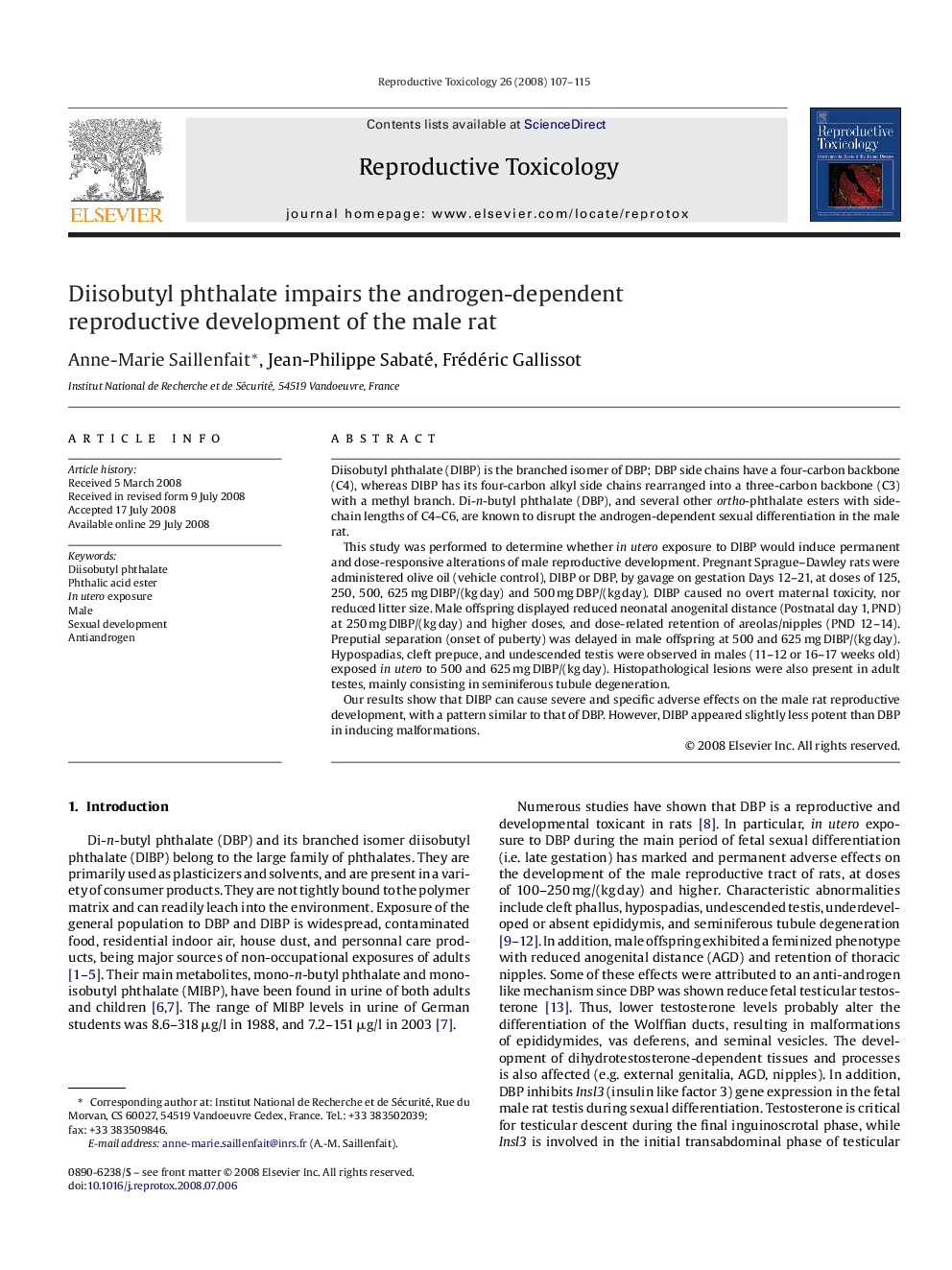| کد مقاله | کد نشریه | سال انتشار | مقاله انگلیسی | نسخه تمام متن |
|---|---|---|---|---|
| 2594393 | 1132267 | 2008 | 9 صفحه PDF | دانلود رایگان |

Diisobutyl phthalate (DIBP) is the branched isomer of DBP; DBP side chains have a four-carbon backbone (C4), whereas DIBP has its four-carbon alkyl side chains rearranged into a three-carbon backbone (C3) with a methyl branch. Di-n-butyl phthalate (DBP), and several other ortho-phthalate esters with side-chain lengths of C4–C6, are known to disrupt the androgen-dependent sexual differentiation in the male rat.This study was performed to determine whether in utero exposure to DIBP would induce permanent and dose-responsive alterations of male reproductive development. Pregnant Sprague–Dawley rats were administered olive oil (vehicle control), DIBP or DBP, by gavage on gestation Days 12–21, at doses of 125, 250, 500, 625 mg DIBP/(kg day) and 500 mg DBP/(kg day). DIBP caused no overt maternal toxicity, nor reduced litter size. Male offspring displayed reduced neonatal anogenital distance (Postnatal day 1, PND) at 250 mg DIBP/(kg day) and higher doses, and dose-related retention of areolas/nipples (PND 12–14). Preputial separation (onset of puberty) was delayed in male offspring at 500 and 625 mg DIBP/(kg day). Hypospadias, cleft prepuce, and undescended testis were observed in males (11–12 or 16–17 weeks old) exposed in utero to 500 and 625 mg DIBP/(kg day). Histopathological lesions were also present in adult testes, mainly consisting in seminiferous tubule degeneration.Our results show that DIBP can cause severe and specific adverse effects on the male rat reproductive development, with a pattern similar to that of DBP. However, DIBP appeared slightly less potent than DBP in inducing malformations.
Journal: Reproductive Toxicology - Volume 26, Issue 2, October 2008, Pages 107–115